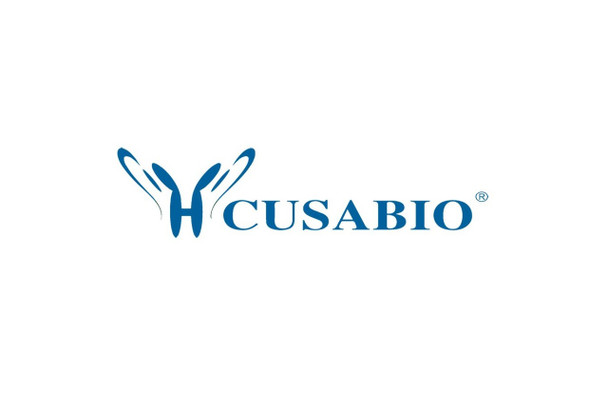Cusabio Active Proteins
Recombinant Human Transforming growth factor beta-3 (TGFB3), Partial (Active) | CSB-AP004051HU
- SKU:
- CSB-AP004051HU
- Availability:
- 5 to 10 Working Days
Description
Recombinant Human Transforming growth factor beta-3 (TGFB3) ,Partial (Active) | CSB-AP004051HU | Cusabio
Protein Description: Partial
Alternative Name (s) : Transforming growth factor beta-3;TGFB3;TGF-beta-3;Latency-associated peptide;LAP
Gene Names: TGFB3
Research Areas: Cancer
Species: Homo sapiens (Human)
Source: Mammalian cell
Tag Info: Tag-Free
Expression Region: 301-412aa (Y340F)
Sequence Info: ALDTNYCFRNLEENCCVRPLYIDFRQDLGWKWVHEPKGYFANFCSGPCPYLRSADTTHSTVLGLYNTLNPEASASPCCVPQDLEPLTILYYVGRTPKVEQLSNMVVKSCKCS
Biological Activity: The ED50 as determined by its ability to inhibit the IL-4-dependent proliferation of TF-1 mouse T cells is less than 2 ng/ml.
MW: 12.7 kDa
Purity: Greater than 95% as determined by SDS-PAGE.
Endotoxin: Less than 1.0 EU/µg as determined by LAL method.
Relevance: Transforming growth factor beta 3 (TGFB3) is a member of a TGF -β superfamily which is defined by theirstructural and functional similarities. TGFB3 is secreted as a complex with LAP. This latent form of TGFB3becomes active upon cleavage by plasmin, matrix metalloproteases, thrombospondin -1, and a subset ofintegrins. It binds with high affinity to TGF- β RII, a type II serine/threonine kinase receptor. TGFB3 is involved incell differentiation, embryogenesis and development.It is believed to regulate molecules involved in cellularadhesion and extracellular matrix (ECM) formation during the process of palate development. Without TGF-β3,mammals develop a deformity known as a cleft palate.
PubMed ID:
Notes: Repeated freezing and thawing is not recommended. Store working aliquots at 4℃ for up to one week.
Function: Involved in embryogenesis and cell differentiation.
Involvement in disease: Arrhythmogenic right ventricular dysplasia, familial, 1 (ARVD1) ; Loeys-Dietz syndrome 5 (LDS5)
Subcellular Location: Secreted
Protein Families: TGF-beta family
Tissue Specificity:
Paythway: Hipposignalingpathway
Form: Lyophilized powder
Buffer: Lyophilized from a 0.2 μm filtered solution of 50mM Glycine-HCl, 150mM NaCl, pH2.5.
Reconstitution: We recommend that this vial be briefly centrifuged prior to opening to bring the contents to the bottom. Please reconstitute protein in deionized sterile water to a concentration of 0.1-1.0 mg/mL.We recommend to add 5-50% of glycerol (final concentration) and aliquot for long-term storage at -20℃/-80℃. Our default final concentration of glycerol is 50%. Customers could use it as reference.
Uniprot ID: P10600
Uniprot Entry Name:
HGNC Database Link: HGNC
UniGene Database Link: UniGene
KEGG Database Link: KEGG
STRING Database Link: STRING
OMIM Database Link: OMIM










